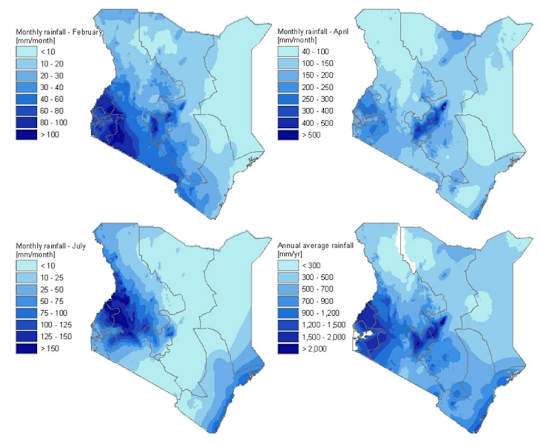Genetically Modified crops Part I - Ethiopia
Defining the concept of a drought is particularly complex, there are multiple variables including hydrological, geomorphic, social, and ecological factors which influence and vary per location, creating the possibility of numerous climatic and societal conditions which can trigger a drought. In saying this, there is a central element which is noted when defining a drought – a prolonged deficit in precipitation, often spanning over a seasonal period. What comes with this is typically low humidity and high temperatures.
Specifically for Ethiopia, the principal drivers for drought are due to large-scale climate variability which in return impact the macro-scale pressure systems and circulating atmospheric dynamics in the region. There are suggestions of how tropical cyclones which develop in the Southwest Indian Ocean can indirectly impact weather patterns in Ethiopia during periods of depressions (these depressions coincide with times of drought). Furthermore, during periods of El Niño there are increased probabilities of the agricultural productive land and major water reservoirs in Ethiopia to experience drought.
From this, it is evident that Ethiopia experiences extreme climate variability, with an inherently unstable future. Due to the impacts of anthropogenic climate change, existing weather systems are expected to intensify, amplifying extreme weather conditions. For Ethiopia, this is likely to be an increase in sporadic rainfall yet also longer lasting droughts. Therefore, it is imperative that the nation finds a way to farm, providing food for their rapidly growing population. However, the ongoing Tigray War has created an environment of severe political and social instability impacting the entire country.
Genetically modified (GM) foods originate from organisms whose genetic material (otherwise known as DNA) has been altered in a way which is not naturally occurring. This enables the production of mainly plants but also animals and micro-organisms with specific, beneficial qualities for humanity. Currently, the main use of these crops is to improve crop yields but there is also the possibility to produce plants which are resistant to diseases and extreme weather. For Ethiopia, this seems like a potential way out of food insecurity.
Initial step by step process of developing GM crops
After the Green Revolution in the 20th century, many schemes were placed across Ethiopia and other African countries to help protect arable land including irrigation techniques and increasing the use of chemical fertilizers which did positively impact the food industry. However, these were criticised for exacerbating land degradation, over-extracting groundwater, creating an abundance of chemically resistance pest and the salinisation of irrigated areas. This suggests how the production of GM crops may in fact be a way to protect Ethiopia from increasing malnutrition rates whilst protecting the environment.
GM crops have been commercialised since 1996, rapidly being adopted by both smallholder and large farming organisations. In saying this, not all countries have adopted this regulation and Ethiopia only recently has agreed to commercialise the cultivation of cotton and is continuing with research crops of GM maize. Across the African continent, maize is the most widely grown crop and is the main food source for over 300 million people. Unfortunately, the crop is also severely impacted by both drought and insects-pests, creating a high proportion of crop failure, destroying yields and creating issues for food security.
Farmer in Ethiopia, surrounded by GM maize
The Bill and Melinda
Gates Foundation paired with the US Agency for International Development
implemented the TELA Maize Project across 7 African countries,
including Ethiopia. The aim is to trial the production of maize which is
protected from both droughts and against the fall
armyworm which is rapidly poisoning and destroying maize crops. Eventually,
plans are in place to allow the commercialisation of farming of GM crops,
targeting smallholder farms. This is expected to aid farmers as they
will spend less on insecticides, whilst creating improved grain quality and
increasing the monetary benefits from their yields.
My next post will endeavour to look at the positives and negatives of GM crops and whether this method is sustainable and positive for the country of Ethiopia.





This was an interesting post, Silke! I was wondering why the probability of drought increases during El Niño?
ReplyDelete